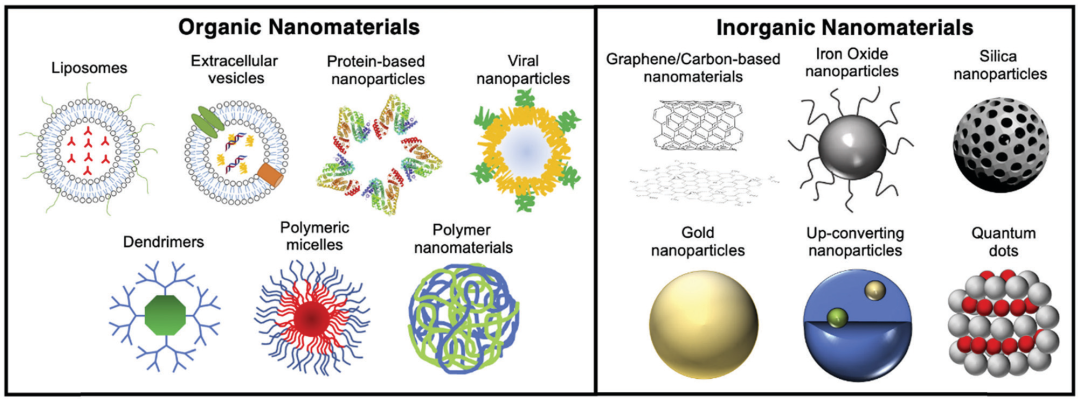Chem. Soc. Rev: Radiolabeled nanomaterials for medical imaging and treatment
Rafael T. M. de Rosales, St Thomas Hospital, UK, reviewed the application of radiolabeled nanomaterials in medical imaging and treatment.

Key points of this article:
(1) Nanomaterials provide unique physical, chemical and biological properties for medical imaging and treatment. In the past two decades, more and more nano-drugs have begun clinical practice. In order to promote the clinical transformation of nanomedicine, it is very important to study its early-stage systemic biodistribution and pharmacokinetics. Studies have shown that radiolabeled nanomaterials can be used for non-invasive in vivo tracking imaging of the whole body through sensitive clinical imaging techniques, namely positron emission tomography (PET) and single photon emission computed tomography (SPECT). In addition, certain radionuclides themselves also have therapeutic effects, which can realize the treatment of diseases based on radionuclides. In the process of developing nanomaterials for PET/SPECT imaging and radionuclide therapy, choosing the most appropriate radiolabeling method and understanding its limitations are crucial. The choice of different radiolabeling strategies often depends on the types of nanomaterials and radionuclides used and the ultimate application route.
(2) In the article, the author reviews the different currently available radiolabeling strategies and introduces their respective advantages and disadvantages; at the same time, the author also critically forecasts the development prospects of this field, aiming to further promote the realization The clinical transformation of nanomedicine products in the field of in vivo imaging or treatment.
references
Juan Pellico. et al. Radiolabelling of nanomaterials for medical imaging and therapy. Chemical Society Reviews. 2021
DOI: 10.1039/d0cs00384k
https://pubs.rsc.org/en/content/articlelanding/2021/cs/d0cs00384k#!divAbstract

Key points of this article:
(1) Nanomaterials provide unique physical, chemical and biological properties for medical imaging and treatment. In the past two decades, more and more nano-drugs have begun clinical practice. In order to promote the clinical transformation of nanomedicine, it is very important to study its early-stage systemic biodistribution and pharmacokinetics. Studies have shown that radiolabeled nanomaterials can be used for non-invasive in vivo tracking imaging of the whole body through sensitive clinical imaging techniques, namely positron emission tomography (PET) and single photon emission computed tomography (SPECT). In addition, certain radionuclides themselves also have therapeutic effects, which can realize the treatment of diseases based on radionuclides. In the process of developing nanomaterials for PET/SPECT imaging and radionuclide therapy, choosing the most appropriate radiolabeling method and understanding its limitations are crucial. The choice of different radiolabeling strategies often depends on the types of nanomaterials and radionuclides used and the ultimate application route.
(2) In the article, the author reviews the different currently available radiolabeling strategies and introduces their respective advantages and disadvantages; at the same time, the author also critically forecasts the development prospects of this field, aiming to further promote the realization The clinical transformation of nanomedicine products in the field of in vivo imaging or treatment.
references
Juan Pellico. et al. Radiolabelling of nanomaterials for medical imaging and therapy. Chemical Society Reviews. 2021
DOI: 10.1039/d0cs00384k
https://pubs.rsc.org/en/content/articlelanding/2021/cs/d0cs00384k#!divAbstract
18915694570
Previous: Cell Stem Cell: Hydrog


